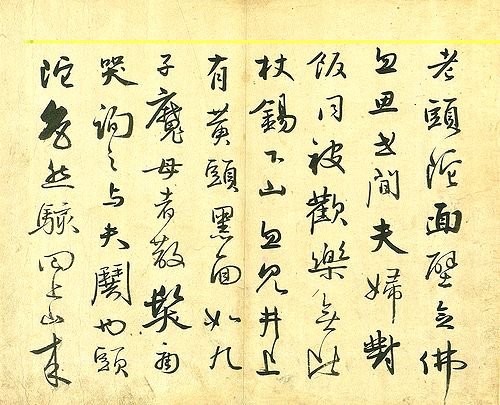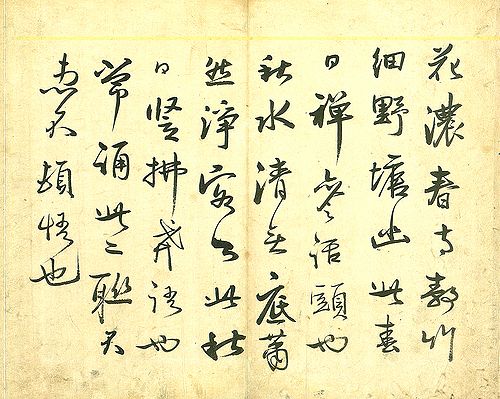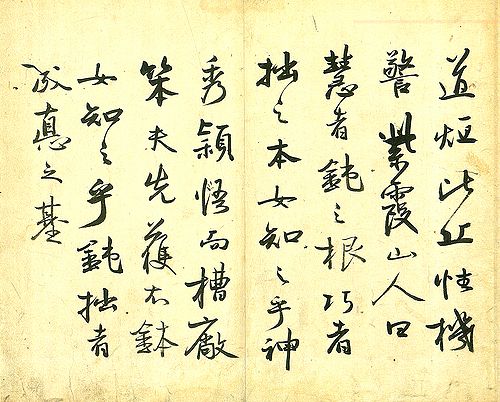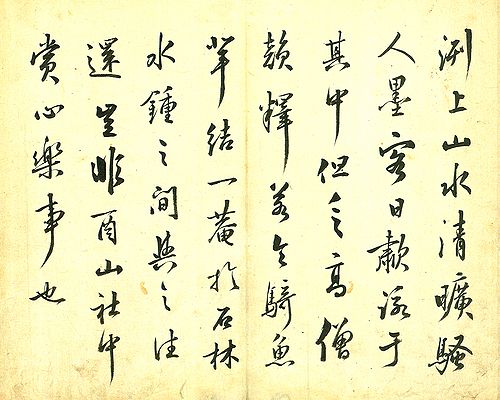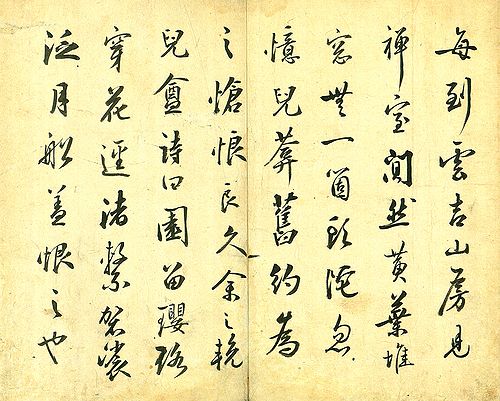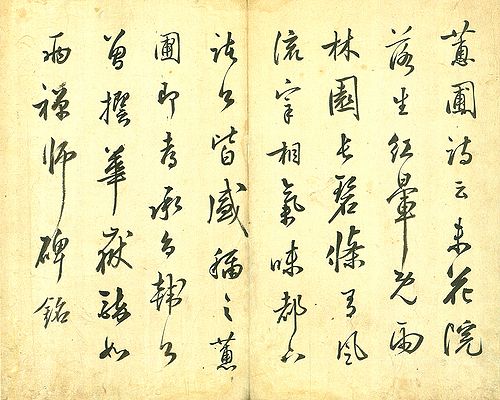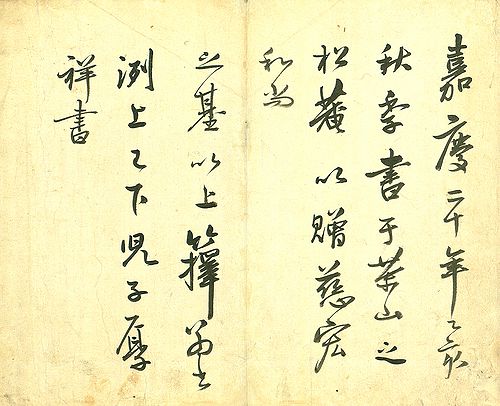"(Translation) 茶山 贈言帖"의 두 판 사이의 차이
(→Student 9 : (Write your name)) |
(→Student 9 : (Hu Jing)) |
||
| 113번째 줄: | 113번째 줄: | ||
*Discussion Questions: | *Discussion Questions: | ||
| + | |||
1. How was the relationship between Dasan and Monk Jahong? Besides Jahong, did Dasan make acquaintence with other monks? Was there any network among those people? | 1. How was the relationship between Dasan and Monk Jahong? Besides Jahong, did Dasan make acquaintence with other monks? Was there any network among those people? | ||
| + | |||
2. Did Monk Jahong ever give respose to Dasan? and can we find any reference source? | 2. Did Monk Jahong ever give respose to Dasan? and can we find any reference source? | ||
2017년 7월 5일 (수) 09:53 판
| Primary Source | ||
|---|---|---|
 |
Title | |
| English | Dasan’s advice to a Buddhist Monk (Jahong 慈弘) | |
| Chinese | 茶山의 贈言帖 | |
| Korean(RR) | 다산의 증언첩 | |
| Text Details | ||
| Genre | Literati writings | |
| Type | ||
| Author(s) | 茶山 丁若鏞 | |
| Year | ||
| Source | ||
| Key Concepts | ||
| Translation Info | ||
| Translator(s) | Participants of 2017 Summer Hanmun Workshop (Advanced Translation Group) | |
| Editor(s) | ||
| Year | 2017 | |
목차
- 1 Introduction
- 2 Original Script
- 3 Translation
- 3.1 Student 1 : (Irina)
- 3.2 Student 2 : (Masha)
- 3.3 Student 3 : (Jong Woo Park)
- 3.4 Student 4 : (King Kwong Wong)
- 3.5 Student 5 : (Kim Young)
- 3.6 Student 6 : (Zhijun Ren)
- 3.7 Student 7 : (Write your name)
- 3.8 Student 8 : Martin
- 3.9 Student 9 : (Hu Jing)
- 3.10 Student 10 : (Write your name)
- 3.11 Student 11 : (Write your name)
- 3.12 Student 12 : (Write your name)
- 3.13 Student 13 : (Write your name)
- 3.14 Student 14 : (Write your name)
- 4 Further Readings
Introduction
Original Script
Translation
Student 1 : (Irina)
- Discussion Questions:
Make difference between values in Buddhist word and values in our word.
Student 2 : (Masha)
- Discussion Questions:
What is the role of nature in Buddhist training? How is it opposed to daily life?
Student 3 : (Jong Woo Park)
- Discussion Questions:
What might be the power dynamic between Buddhist monks and Confucian literati in the late Chosŏn period? What kind of feeling does Chŏng, a talented but marginalized yangban, share with a local Buddhist monk, Jahong?
Student 4 : (King Kwong Wong)
- Discussion Questions:
1. If we consider Buddhists wre stigmatized in the Choson society, how can we explain Chong Yag-yong's relationship with Buddhist monks? 2. Given the example of Chong Yag-yong, were all Confucian scholars well-versed in Buddhist ideas?
Student 5 : (Kim Young)
- Discussion Questions:
Student 6 : (Zhijun Ren)
- Discussion Questions:
What does Dasan’s defense of gradual enlightenment against sudden enlightenment tell us about the interaction between Buddhism and Confucianism in Chosŏn society? Given that Buddhism, in general, was oppressed during Chosŏn dynasty, what Dasan, a prominent Confucian, and his active engagement with Buddhism tell us about the mutual penetration during Chosŏn.
Student 7 : (Write your name)
- Discussion Questions:
Student 8 : Martin
- Discussion Questions:
1. Besides giving advice to Buddhist monks seeking enlightenment, how does Tasan portray the non-buddhist world?
Student 9 : (Hu Jing)
- Discussion Questions:
1. How was the relationship between Dasan and Monk Jahong? Besides Jahong, did Dasan make acquaintence with other monks? Was there any network among those people?
2. Did Monk Jahong ever give respose to Dasan? and can we find any reference source?
Student 10 : (Write your name)
- Discussion Questions:
Student 11 : (Write your name)
- Discussion Questions:
1. What is the intention of Dassan writing these poems? What are the messages of Dasan to people, not just monks? 2. Nature is the constant source of poems. What did Dasan mean by using nature as a metaphor? 3. How did Dassan perceive Buddhism? What is his relationship to buddhist monks?
Student 12 : (Write your name)
- Discussion Questions:
Student 13 : (Write your name)
- Discussion Questions:
Student 14 : (Write your name)
- Discussion Questions:
